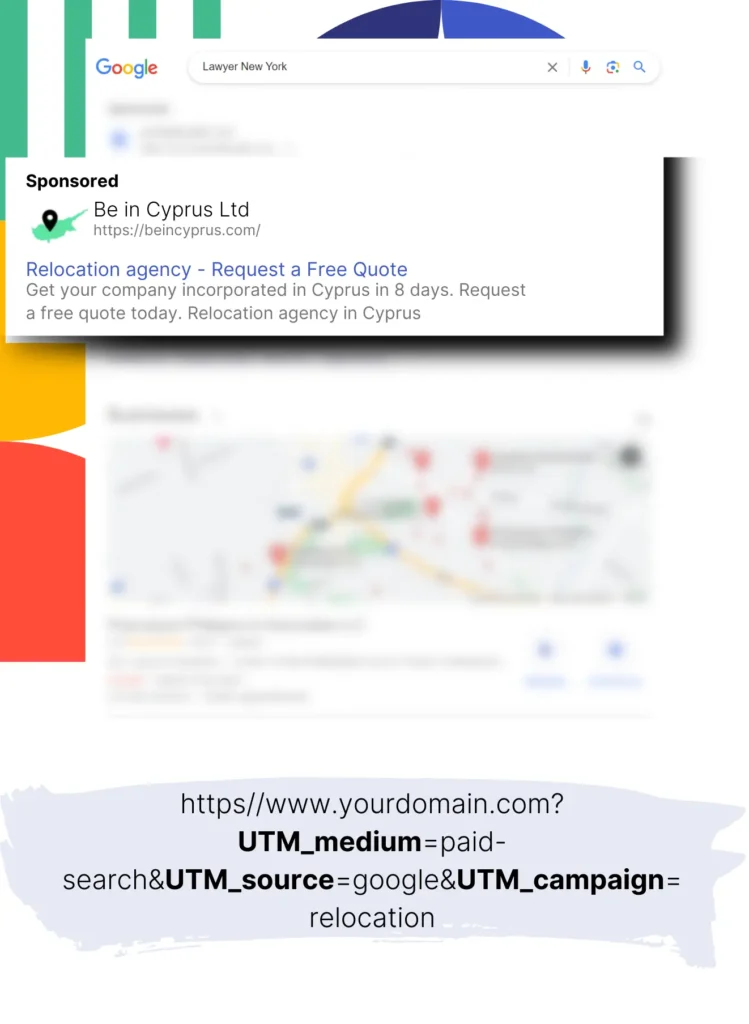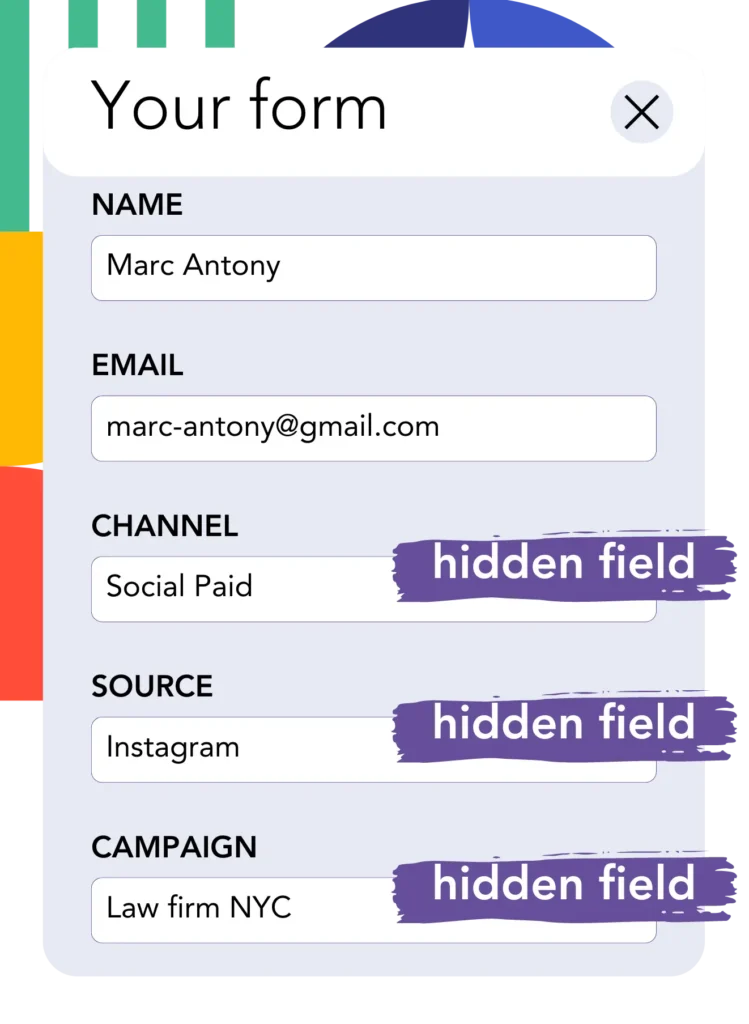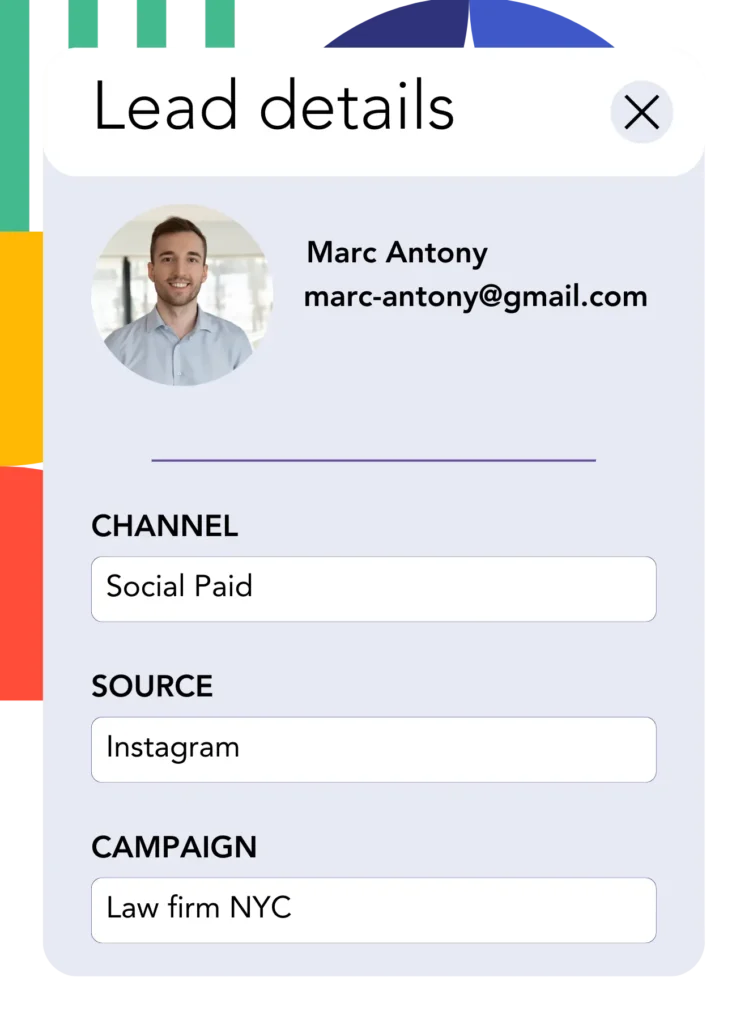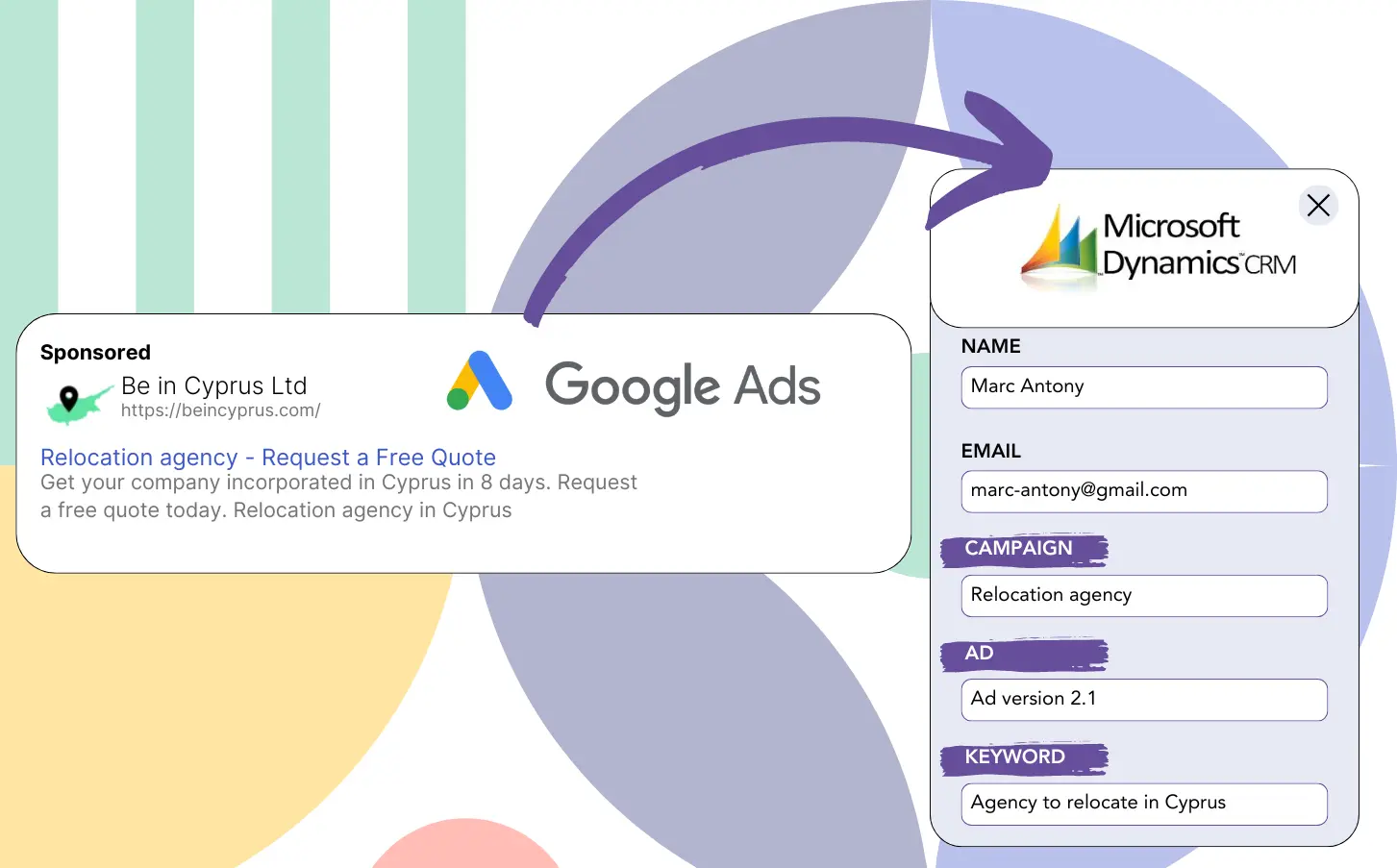Do you use Google Ads for lead generation but struggle to identify the source campaigns?
Many are familiar with this problem. Google Ads reports lead counts from campaigns, ads, or keywords, but not individual lead information.
Therefore, you can’t identify which campaign, ad, or keyword is responsible for converting leads into customers.
Leadsources provides a solution to this problem.
Finally, Leadsources lets you track your Google Ads data (campaign, ad, keyword, etc.) on a lead level.
By sending your leads to Microsoft Dynamics CRM, you can view the Google Ads data (campaign, ad, keyword, etc.) for leads that turned into clients.
With these reports, such as: Keywords that brought in the most clients… you can determine which keywords to push and which to drop.
Let’s jump in!
Capture Google Ads lead data in Microsoft Dynamics CRM in 4 steps
Step 1: Add Leadsources in the head tag of your website

Sign up to Leadsources.io, and benefit from our 14-day free trial.
Place the Leadsources code in your website’s head tag. No coding skills are necessary.
Simply follow this easy step-by-step guide.
Step 2: Add the UTM parameters to your Google Ads campaigns

Insert the UTM parameters you plan to track across all your Google Ads campaigns.
You can use the following UTM parameters in your ad:
- UTM_source
- UTM_campaign
- UTM_term
- UTM_content
Leadsources captures more than just UTM parameters, such as channel, landing page, and subfolder details, so you get a full view.
Step 3: Add the hidden fields to your form

When users fill out your form (name, email, etc.), Leadsources automatically populates the hidden fields with Google Ads details (campaign, ad, keyword, landing page, etc.).
To achieve this, insert hidden fields in your form to store UTM parameters. We provide easy-to-follow guides for all common form builders. No coding required.
Step 4: Track the Google Ads data in Microsoft Dynamics CRM

When a visitor interacts with your Google Ads ad and reaches your page, Leadsources captures all the Google Ads data (campaign, ad, keyword, landing page, etc.).
Leadsources fills the hidden fields of your form with Google Ads data automatically.
Upon form submission, the Google Ads data and responses are transmitted to Microsoft Dynamics CRM, provided your form is connected to Microsoft Dynamics CRM.
How does Leadsources work?
By placing the Leadsources code in your website’s head tag, it will capture Google Ads data (UTM parameters and referrer) every time someone visits your site.
The data from Google Ads is stored in the hidden fields of your form.
Leadsources will collect data about visitors via the referrer, even if there are no UTM parameters in the URL:
- Channel
- Source
- Campaign
- Landing page
- Landing page subfolder
This technique enables you to keep an eye on important lead source data even when UTM parameters are not present, such as:
- On Google Search
- On your Instagram bio link
- On your social media posts
- Etc.
Most tracking tools focus only on UTM parameters for lead sources, whereas Leadsources provides insights into lead data from channels that lack UTM parameters:
- Organic Search
- Paid Search
- Organic Social
- Paid Social
- Referral
- Affiliate
- Display Advertising
- Direct Traffic
This allows you to bring together precise lead source data into a unified central location.
How to run performance reports
With Google Ads data captured in Microsoft Dynamics CRM, you can now produce performance reports including:
- Leads per channel
- Revenue per channel
- Revenue per keyword
- Etc.
This assists you in making choices about your marketing expenses.
Let’s review the range of reports you can create.
Lead performance reports
You can create reports indicating the amount of leads produced by:
- Channel
- Source
- Campaign
- Landing page
- Landing page subfolder
Example #1
Export the data from campaigns across various channels (SEO, PPC, email, etc.) to produce a report called “Leads by Channel.”

Example #2
Once you find out which channel produces the highest number of leads (e.g., Google Ads), you can narrow your focus to this channel to examine the lead count for each ad campaign.

Example #3
After identifying the top-performing campaign in lead generation, you can investigate further by checking which keywords are yielding these leads.

Sales performance report
While identifying the top ads and keywords for lead generation is beneficial, do they also boost your revenue?
When you direct your form submissions to Microsoft Dynamics CRM, you can produce sales performance reports.
Example:
| Channels | Search Paid | Social Paid |
| Leads | 50 | 75 |
| Sales | 5 | 6 |
| Average order value | $150 | $100 |
| Revenue | $750 | $600 |
After running ads on both Google and Facebook, you noticed that Social Paid ads resulted in more leads compared to Search Paid ads.
After a period of analysis, you find that the Search Paid channel produced more revenue with fewer leads than the Social Paid channel. This helps you determine that increasing the budget for Search Paid campaigns is the right choice.
LeadSources tracks the source of each lead in Microsoft Dynamics CRM, whether they come from ads, organic search, social, email, etc. and syncs that data with each submission. See the full breakdown on the lead source in Microsoft Dynamics CRM page.

